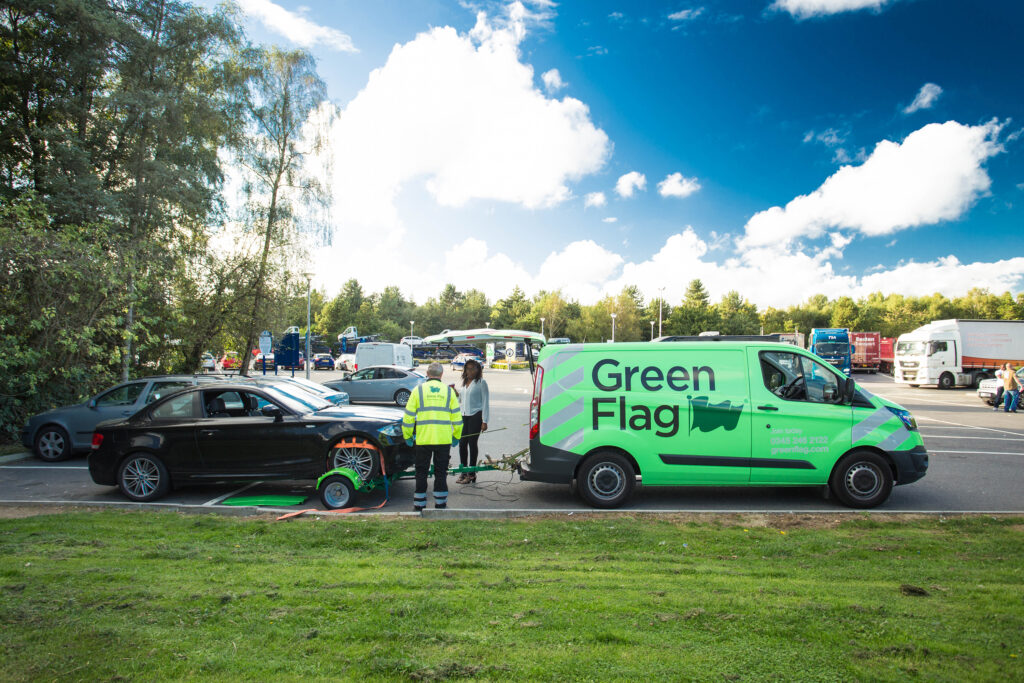
In 2019, vehicle breakdowns in England hit a five-year high. Highways England recorded a 14.8% jump in breakdowns on the country’s motorways and main roads over a 12-month period, compared to the previous year. As the average age of cars on the road increases, the need for reliable breakdown cover has never been higher.
In the UK, competition in the roadside recovery space is fierce. The sector’s main providers constantly look to chip away at each other’s customer bases by evolving their pricing and services. In times of often acute need, drivers stranded next to their broken-down vehicles want to be back on the road as soon as possible, and with minimum fuss. It is truly a customer-centred industry.
Green Flag is right in the middle of it. The third-biggest provider of roadside recovery in the UK, Green Flag – part of insurance giant Direct Line Group – has more than 3.5 million members. Its approach differs from that of its closest competitors, The AA and RAC, in that it utilises a network of over 250 businesses and 4,000 technicians to rescue its customers. The model works: Green Flag’s Net Promoter Score, the index that measures the willingness of customers to recommend products or services, is in the high 70s. A score above 50 is normally considered excellent, with 80 being world-class.
Yet as Green Flag prepares to mark 50 years of 24/7 service in 2021, its determination to be even better has never been more apparent. Right now, the company is in the middle of a five-year change programme: it wants to transform from a traditional financial services business into an agile and ambitious fintech. It wants its customer experience to be faster, simpler and better. By overhauling its technology and putting data at its core, Green Flag is aiming to be the biggest and the best.
In April 2017, Dean Keeling walked through the doors at Green Flag as Managing Director. He found a successful business, a roadside recovery provider with a solid customer base in the UK and a growing reputation. But as a corporate leader with experience in digital and IT modernisation, he also recognised that Green Flag’s incumbent technology was a problem.
Straddled with on-premise infrastructure built for legacy monolithic databases, Green Flag was in no position to improve the quality of the service it delivered to its subscribers, who were increasingly demanding a more personalised experience through digital channels. After assessing Green Flag’s model, Keeling quickly decided that change was necessary, as he explains to Digital Bulletin.
“Fundamentally, Green Flag is and always has been a good company,” he says. “It’s got a great model, we’ve got people who are passionate about customers, and we go the extra mile. But I think it’s fair to say we’ve done that with [technological] capabilities that are 20, and in some cases, 30 years old. Really, we need to now make this generational leap, into having an operating model that’s fit for purpose for what the next 10 years are all about.”
To that end, Green Flag set about a root-and-branch overhaul, looking not just at its base technology but also the makeup of its teams and the design of its processes. On the tech side, at the end of a comprehensive due diligence process, Keeling and Green Flag’s leadership team made an important decision: it was to leave behind its legacy IT and lay foundations for a digital future in the form of a completely new serverless platform based out of AWS.
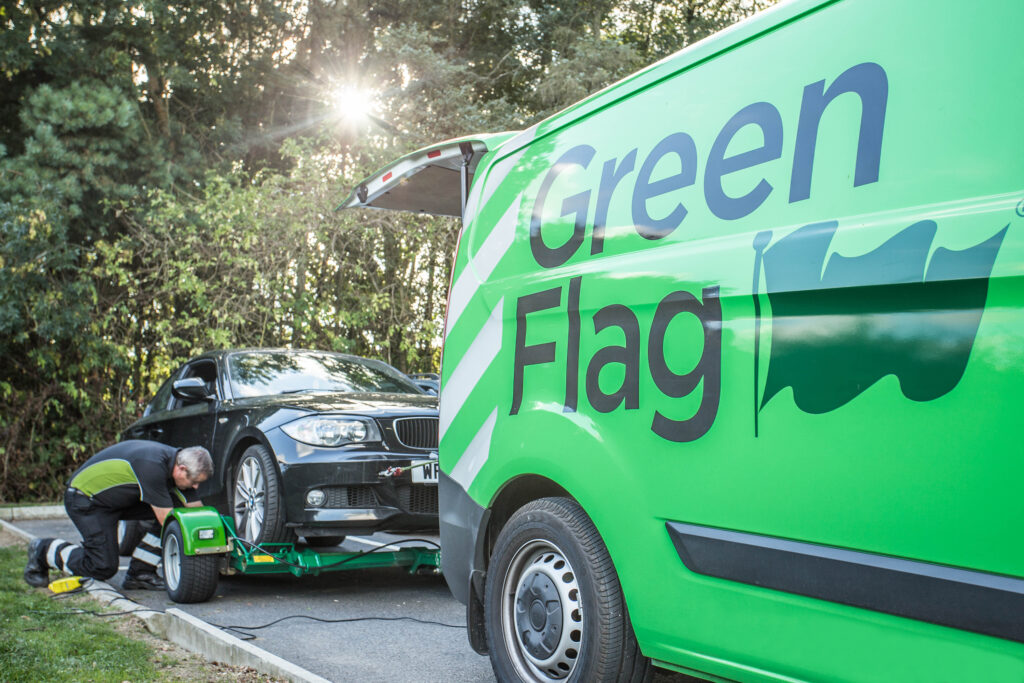
In explaining the decision, Shakeel Butt, Green Flag’s Chief Technology Officer, says he wants technology to become the “lifeblood” of the organisation. Ultimately, he sees a scalable, cloud-based platform as essential for Green Flag to be able to meet changing business and customer needs.
“I want the solution to remove technology challenges from the table,” he says. “What I don’t want is for us to come up with a new idea down the line and we can’t do it because of technology. You ultimately need the flexibility to pivot, and while you do have a sense of direction for the next five, eight or 10 years, you must recognise that true business value comes from the agility of being able to take a sharp left turn two years into that roadmap.”
The roadmap started in earnest at the end of 2018. To support its technological shift, Green Flag partnered with Contino, an engineering-led technical consultancy with specialism in cloud transformation. Contino helped Green Flag map out its plan, and ultimately build and launch its platform inside only five weeks. It also supported its early-stage recruitment and worked side by side with Green Flag’s people to train them on AWS best practices and cloud-native working.
Contino
I had some very senior Contino engineers on the shop floor, embedded in scrum teams, actually working with permanent Green Flag employees, completely seamlessly,” says Butt. “So that was very valuable, because actually it means that it’s one team and we’re all pulling in the same direction. Very quickly Contino was able to help with accelerating our build of pipelines, test automation, infrastructure-as-code, and then hand that over to the new resources as they were being onboarded.”
The teams had a lot to get up to speed with. Green Flag’s new architecture was based on standalone microservices to enable an ongoing “build-and-run” approach to software development. It was also fundamental to the business agility Butt was so keen to introduce; with microservices, he says, making changes to only small components means less risk and faster deployments.
With well-defined APIs joining the dots, Green Flag created an autonomous and specialised architecture that set it up to innovate and accelerate time-to-market for new features. It is light and day compared to the legacy that previously weighed Green Flag down. Software development is now faster and far simpler.
“Each of these decisions were designed to stand within Green Flag as a principle that we would always try to honour – the idea being that with the right principles in place, we would never paint ourselves into a corner with technology,” says Butt. “Having API-led connectivity meant that every component spoke to every other component in the same way, using the same language, and to continue that metaphor, I didn’t have to worry with having lots of interpreters and translators involved. That has simplified the architecture.”
The platform has given Green Flag unprecedented opportunity to use cutting-edge technology to drive business value. Butt has relished being part of it – “I don’t think I’ve ever had as much fun with new tech as I have in Green Flag” – and since the beginning of 2019, the company has rolled out a series of AWS services that have either reduced costs, increased stability or made product development more efficient.
ECS
One programme area the team is excited about is the integration of Amazon Connect. As a largely telephony-based business, Green Flag is always looking to streamline the process for customers who have been left high and dry by the side of a road. Amazon Connect is an omnichannel, cloud-based contact centre which AWS first launched in 2017, and Green Flag is already making use of some of its capabilities under the hood.
“A common reason for customers to call through to us is they want to know where their breakdown technician is,” says Chief Product Manager Jeremy Bristow. “We’ve said ‘we’ll be half an hour to 45 minutes’, it’s got to half an hour, and they want to know where we are. So, they’ll ring us, and then they might have to sit in a queue just to find out where the breakdown technician is. We’ve launched a service now with Amazon Connect where they can get an automated ETA via a phone call with AWS Lex technology interrogating the platform, so you don’t have to sit in a queue.”
Having a cloud-based telephony solution also allows Green Flag to very flexibly support remote working, providing a huge benefit to the business. But when first exploring the possibilities of Amazon Connect, the leadership team knew it needed some outside support to effectively manage the integration. That is why it enlisted the help of ECS, a digital transformation consultancy which has a long-standing partnership with AWS.
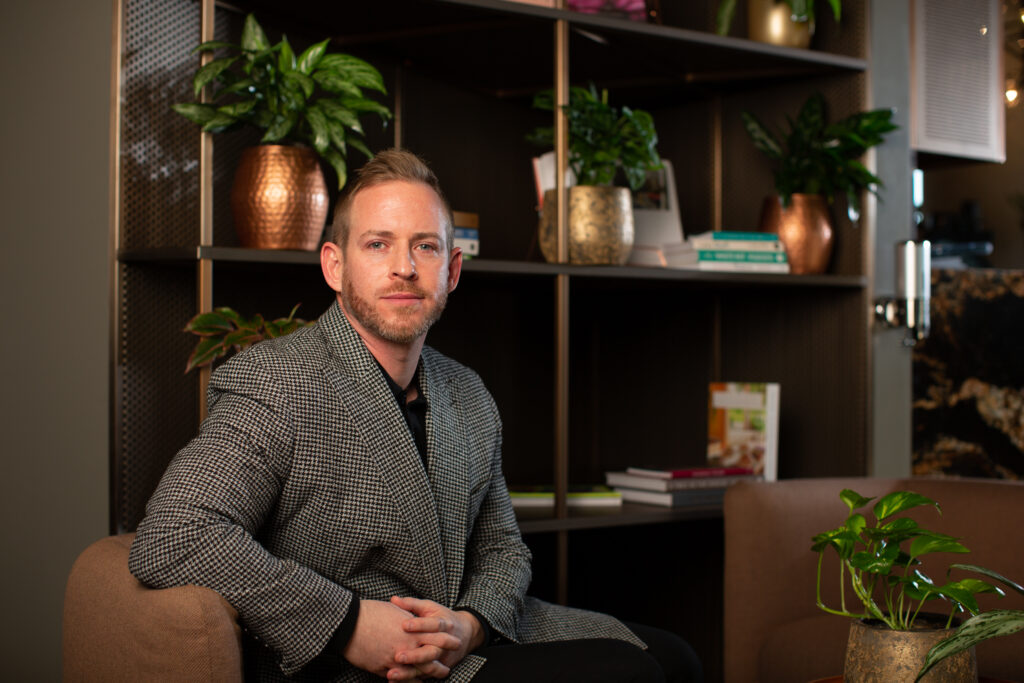

“From ECS’s perspective, it was something it was able to jump onto very quickly,” says Butt. “It had a very strong case study of another large financial services organisation that it had worked with to deliver something similar, which provided a lot of reassurance for us. And its operating model was very much aligned to the way that we were working – it likes to deliver in an agile environment, and it likes to implant all of its talent into your teams.”
Keeling uses a phrase to highlight one of the biggest challenges Green Flag currently faces: “We are data-rich, but insight-poor”. In a way, the company’s whole digital transformation has been architected around solving this issue. Data, and using data in real-time to help its customers, is a strategic necessity for Green Flag. It wants to make better decisions, and automate decision-making, on the basis of data.
“Using data is fundamental to everything that we want to do,” says Bristow. “As an organisation today, data is stored in lots of different places. We need to bring all of that data together in the right way, with the right controls and the right permissions, to the point where we’re able to start to gain really valuable insight on what our customers are telling us and then to really improve the products.”
This represents a big undertaking for Green Flag, but it knows that if it is able to improve its approach to data, the effects will be game-changing. Not only will it be better equipped to understand the trends and behaviours of its customers, it will also be able to benefit from the data of its expanding portfolio of partners.
One company assisting Green Flag on this part of its journey is Segment, which has built a customer data platform for collecting, cleansing and controlling data. Green Flag has been able to plug Segment into its websites and customer journeys, integrating the platform with a number of data points, including New Relic and Google Analytics, and delivering business value with the clean and governed data.
Segment
“Segment’s offering is slightly unique,” says Butt. “It is able to offer a cloud data warehouse that requires you to have one integration into your user experience that you can then link off to multiple destinations. At the moment, there are over 300 integrations that you can plug Segment straight into, and it’ll feed all the data through seamlessly. Then you’ve got data schemas that you can apply and personas that you can then overlay. It suddenly means that from a data perspective, we’re able to get a lot more richness almost immediately.”
Data intelligence will also be vital to Green Flag meeting one of its principal objectives: to go beyond roadside recovery and add new layers to its service. Portfolio diversification is only made possible through data consolidation, especially having access to metrics and data that are related to partnership operations.
Broadening its scope is critical to Green Flag’s customer-centric business plan – and the next major step for the company is to use its refreshed technology stack to rapidly develop different and innovative products for the benefits of its users. Bristow, as Chief Product Manager, oversees this area and is excited by the potential.
“Looking after the customer is absolutely fundamental to our business, and we recognise that if we don’t look after our customers, then we operate in a competitive market and those customers won’t stay with us,” he says.
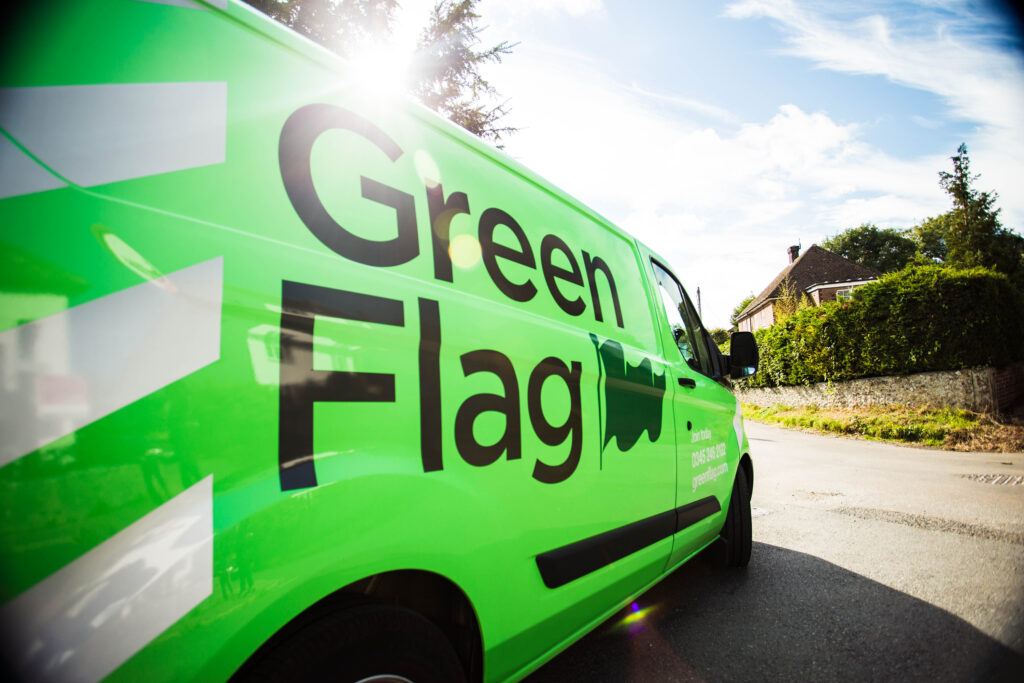
“We want to be more to the motorist than just to be brilliant in a rescue. That’s the core of our business, and we have to be brilliant at rescue if we want to do other things, but we want to ensure that you, as one of our customers, can keep your vehicle on the road so you don’t have the inconvenience of a breakdown, by starting to offer other products and services. We want to help customers not just in a breakdown situation, but also in everything you need to do as part of using and maintaining your vehicle every day.”
The automotive world is changing before our eyes, with electrification and connected, self-driving cars just around the corner. Green Flag wants to launch new products even faster, so is developing a community of “Green Flaggers” to beta test products and give live feedback on the user experience. As its industries are revolutionised, it sees staying at the bleeding edge of innovation as key.
Green Flag might still be in the early stages of its five-year initiative, but the organisation is already seeing the benefits of its work. Over the past three years as a whole, Green Flag’s market share has grown and it has halved the number of complaints it receives from customers, leading to an 80% reduction in the amount of compensation it has had to pay out. Its customer engagement scores are also at a record high for the last five years.
It would be easy to view technology as the magic ingredient behind these successes, but Keeling and his colleagues know that bringing about positive change comes down to far more than the nuts and bolts of infrastructure, or the strength of machine learning models. For CTO Butt, a lot of his focus has been on people and teams. He views talent as the number one priority.
From the get-go, Butt was deliberate with how he organised his people and processes so they aligned with the technology architecture. Having insourced its technology, Green Flag insourced its people, and over the last two years, it has built up a 100-strong technology team. Wedded to a scaled-agile (SAFe) operating model, Green Flag now boasts skills and processes that are far more advanced than ever before.
“Because our architecture is based on a number of discrete platforms that are linked to specific technology domains, I was able to allocate a designated scrum team to each one, overlaid with our SAFe operating model,” says Butt. “Each team has its own discrete platform they are responsible for the build, development, support and maintenance for end-to-end.”
“So I have a scrum team that looks after our website, I have a scrum team that looks after our customer-facing mobile app, I have a scrum team that looks after our rescue platform, another team that looks after pricing. And each one of these different platforms is completely self-contained yet integrated. It’s great because that ticks a lot of boxes from an agile perspective around empowerment and ownership.”
Butt says the investment made in choosing and developing the right people has “paid back 10 times over” when you measure the teams’ output. Additionally, the success of SAFe has also gone beyond anybody’s expectations.
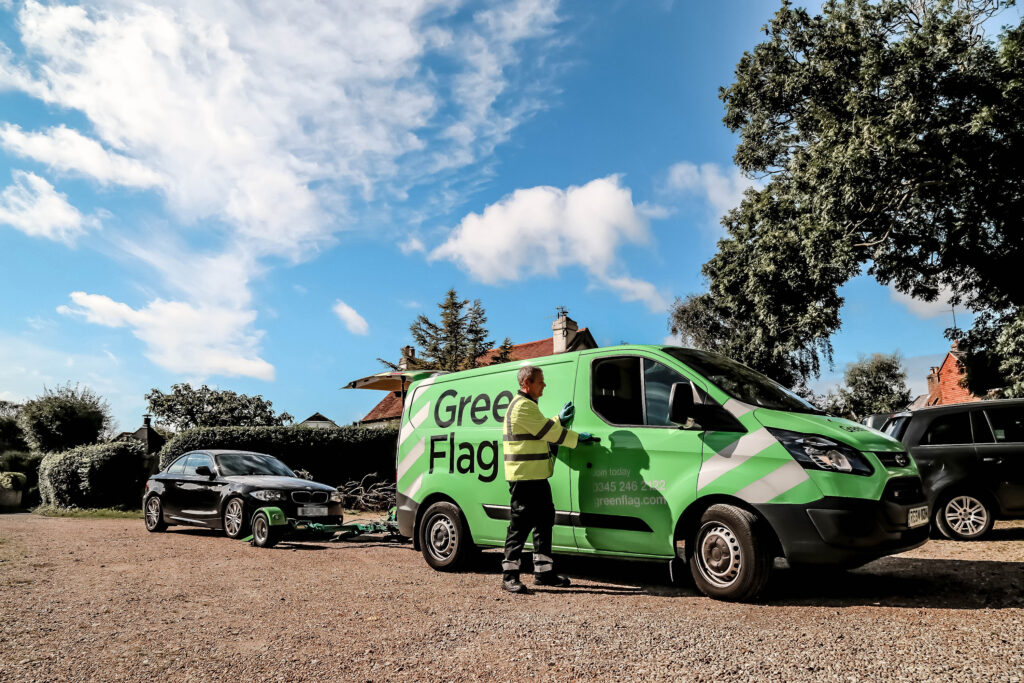
A framework that gives Butt a programme-level view of his scrums, he says SAFe has preserved agile development at the team level while still giving Green Flag all of the non-agile requirements that you need in a regulated financial services business, such as governance and audit and risk management. After just 12 months of running SAFe, Keeling made the call to roll it out across the entire Green Flag business.
“It’s been very successful,” says Butt. “There’s been an awful lot of excitement from the business teams who are adopting agile for the first time. It then means that when those teams interface into the technology programme, suddenly everybody’s talking the same language. Everybody understands the delivery model and concepts around prioritisation. It’s been a very, very inspirational journey for me in seeing a non-technology part of the business suddenly take on scaled-agile.”
Butt clearly feeds off the energy of Green Flag’s people, and it’s the same for the rest of the leadership team. The company has an exciting future as it looks to use its newly-acquired talent and technology to disrupt the roadside recovery sector – and fulfil Direct Line Group’s ambition of building each of its businesses into market leaders.
“Green Flag is a fantastic place to be at the moment,” Keeling says. “We have absolute clarity on what the medium and long-term visions are for the business. We are very clear on how we can add value and support customers, not only in a breakdown but as motorists in general. We’re not completely there yet, we’ve got a gazillion things that we need to do over the next five, eight, 10 years, but it’s all there to be done and we believe in ourselves that we can go after it.”
Bristow adds: “To be involved in the next evolution of Green Flag, as we turn 50 in 2021 and have gone through this big technology change, is super exciting and the possibilities are really endless for us. Now we can grow, we can launch new products, we can start to help customers in new and innovative ways, and we can start to interact with them in new and innovative ways as well, and that’s the bit to me that’s really exciting.”
Green Flag has always been proud of its challenger mindset. As it marks a half-century of service to its customers, the next era could very well see it move from challenger to leader.


